- Introduction: Understanding Blockchain Technology
- The Current State of Healthcare Systems
- Advantages of Implementing Blockchain in Healthcare
- Challenges and Limitations of Blockchain in Healthcare
- Real-world Use Cases of Blockchain in Healthcare
- Regulatory and Legal Implications of Blockchain in Healthcare
- Future of Blockchain in Healthcare: Opportunities and Predictions
- Conclusion: Is Blockchain the Future of Healthcare?
Introduction: Understanding Blockchain Technology
Blockchain technology is a relatively new concept that has taken the world by storm. It is a decentralized, distributed ledger that allows for secure and transparent transactions without the need for intermediaries. The technology has been used primarily in the finance industry, but it has the potential to revolutionize other industries as well, including healthcare.
The Current State of Healthcare Systems
Healthcare systems around the world face a number of challenges, including rising costs, inefficiencies, and lack of transparency. The current system is often fragmented, with patient data scattered across different providers and systems. This can lead to errors in diagnosis and treatment, as well as increased costs due to duplication of tests and procedures.
Advantages of Implementing Blockchain in Healthcare
Implementing blockchain technology in healthcare can solve many of the problems facing the industry. By creating a decentralized, secure, and transparent system for storing and sharing patient data, healthcare providers can improve the accuracy of diagnoses, reduce costs, and improve patient outcomes. Blockchain can also enable the creation of smart contracts that automate the payment and reimbursement process, reducing administrative overhead and increasing efficiency.
Challenges and Limitations of Blockchain in Healthcare
However, implementing blockchain in healthcare is not without its challenges. One of the main issues is the need to ensure the privacy and security of patient data. There is also the challenge of interoperability, as different systems may use different data formats and protocols. Additionally, there is a need for regulatory frameworks to govern the use of blockchain in healthcare, as the technology is still evolving and there is a lack of legal precedent.
Real-world Use Cases of Blockchain in Healthcare
Despite these challenges, there are already several real-world use cases of blockchain in healthcare. One example is MedicalChain, a platform that allows patients to store and share their medical records securely and transparently. Another example is Gem, a platform that enables healthcare providers to share patient data in real-time, reducing errors and improving care coordination.
Regulatory and Legal Implications of Blockchain in Healthcare
The use of blockchain in healthcare also has regulatory and legal implications. The technology is still evolving, and there is a need for clear guidelines and frameworks to govern its use. Additionally, there is a need for legal precedent to be established to ensure that patient data is protected and that liability is clearly defined in the event of errors or malpractice.
Future of Blockchain in Healthcare: Opportunities and Predictions
Looking to the future, the potential of blockchain in healthcare is enormous. It has the potential to transform the way healthcare is delivered, improving outcomes and reducing costs. However, there are still many challenges that need to be overcome, including privacy and security concerns, interoperability, and regulatory frameworks. As the technology evolves and more use cases are developed, it is likely that blockchain will become an increasingly important part of the healthcare landscape.
Conclusion: Is Blockchain the Future of Healthcare?
In conclusion, blockchain has the potential to revolutionize healthcare by creating a secure, transparent, and efficient system for storing and sharing patient data. While there are still many challenges that need to be overcome, the future looks bright for blockchain in healthcare. As more use cases are developed and regulatory frameworks are put in place, it is likely that blockchain will become an increasingly important part of the healthcare landscape.
